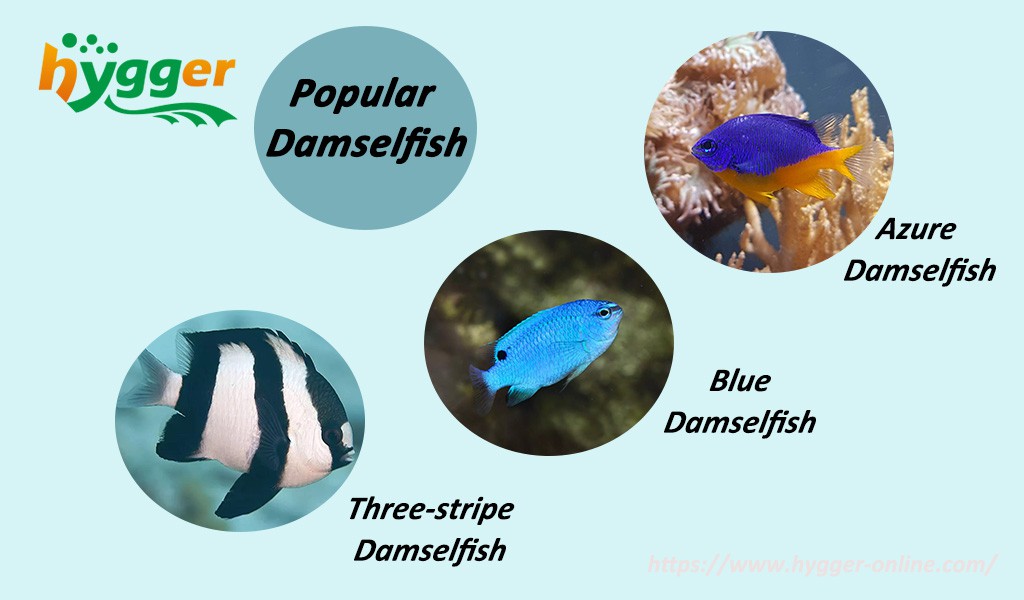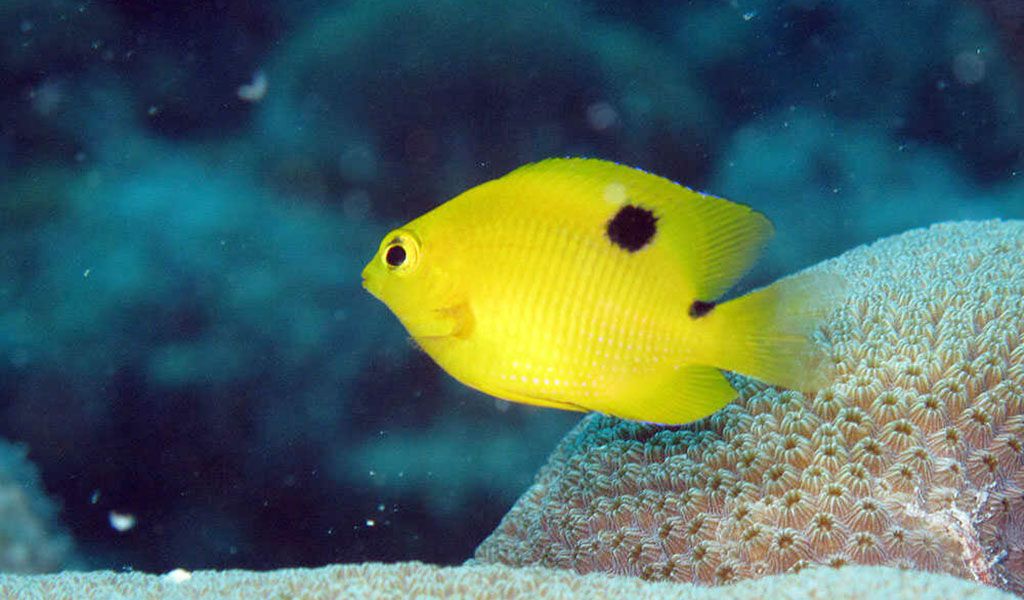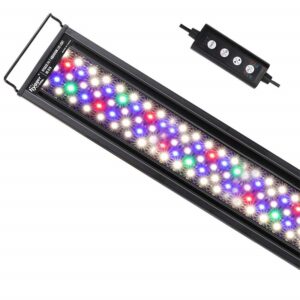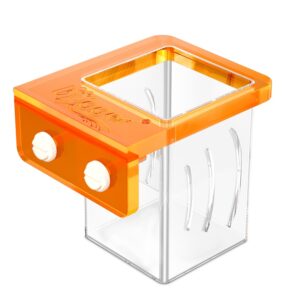Damselfish are an excellent alternative for saltwater aquariums. Most damselfish are hardy and easy to care for, while they are not expensive. Tanks with corals and rocks are optimal for them. In today’s article, we will walk you through something about damsel fish, such as species, temperament, and care tips. So let’s get started right away.
Content Table
Damselfish Profile
Basic info about damselfish
| Family | Pomacentridae | Diet | Omnivore/Carnivore/Herbivore |
| Other names | Demoiselle | Ideal water temperature | 72-84℉ |
| Adult size | 2–12 inches | pH level | 8.0-8.4 |
| Average lifespan | 5 years | Salinity level | 1.020-1.026 |
| Temperament | Aggressive | Carbonate hardness (dKH) | 8-12° |
| Care Level | Easy | Minimum tank size | 30 gallons |
Popular damselfish species
Most damselfish are vibrant. Also, they are popular saltwater fish for new tanks and beginners and are usually used to cycle new tanks. In general, damselfish comes in seven genera – Abudefduf, Chromis, Chrysiptera, Dascyllus, Hypsypops, Neoglyphidodon, and Pomacentris. Next, we will list some popular damsel fish species from each genus to know more about damselfish.
- Abudefduf genus: Sergeant Major
- Chromis genus: Blue Green Chromis, Black Bar Chromis, Blue Chromis, Green Chromis
- Chrysiptera genus: Azure Damselfish, Blue Damselfish (Blue Devil Damselfish), Talbot’s Damselfish, Yellowtail Blue Damselfish
- Dascyllus genus: Two-stripe Damselfish, Three-stripe Damselfish, Four-stripe Damselfish, Domino Damselfish
- Hypsypops genus: Garibaldi
- Neoglyphidodon genus: Neon Velvet Damselfish
- Pomacentrus genus: Gold Belly Damselfish, Lemon Damselfish, Ambon Damselfish, Princess Damselfish

Additionally, we will briefly introduce three popular damselfish mentioned above.
1. Azure Damselfish
Azure damselfish features half-blue and half-yellow body color. They are also called Azure demoiselle, half-blue damselfish, or Yellow dipped damsel. Azure damselfish are hardy and can be a great choice for beginners or new tanks. Commonly, they can grow up to 3 inches.
2. Blue Damselfish
Blue damselfish is also famous as “Blue devil damselfish”. Usually, there is a black spot at the end of the female’s dorsal fin. They are territorial. Consequently, tanks with plenty of hiding places, like rocks, are ideal for them. Generally, blue damsel fish can reach 3 inches and live up to 5 years or even longer.
3. Three-stripe Damselfish
Featuring three vertical black stripes on the body, three-stripe damselfish may be confused with the two-stripe damselfish and four-stripe damselfish, which respectively have two and four vertical black stripes on the body. Three-stripe damselfish can be used to cycle your new aquariums. Nonetheless, it is best to apply live rocks to cycle new tanks. Besides that, three-stripe damselfish can not be introduced to tanks with aggressive and predatory fish, which are large enough to eat them.
Are Damselfish Aggressive
Most damselfish are born with an aggressive temperament. But why? It is relevant to the awareness of territory, especially in tanks with limited room. Hence, most damselfish is not an excellent option for community tanks. They are not only aggressive to other fish, but also to other damselfish species. Thus, it is better not to keep more than one damselfish of different species in the same tank. As for a large damselfish tank, you can introduce fish of similar size and semi-aggressive temperament, such as Clownfish, Tangs, and Gobies. Also, peaceful and timid fish should be avoided. By the way, the tank mates for damselfish should share similar living conditions. Or it may cause health problems.

What Do Damselfish Eat
Damselfish may be omnivorous, carnivorous, or herbivorous, determined by diverse fish species. The same as other fish, a balanced diet is critically crucial. The available food includes plants, algae, carrots, peas, broccoli, worms, brine shrimp, shrimp, copepods, fish eggs, squid, flakes, pellets, freeze-dried food, frozen food, live food or others. Nevertheless, you should keep in mind that never overfeed. Otherwise, it may cause poor water conditions or fish health issues. Generally, you can feed damselfish 1–2 times each day. And make sure they can finish eating within 3–5 minutes.
To conclude, it is best to prepare suitable food for your damselfish before feeding. For example, three spot damselfish are herbivores. Accordingly, you can feed some vegetables. However, the blue damselfish are omnivores and prefer food rich in protein, like shrimp and squid.
Damselfish Interesting Facts
Most damselfish are marine fish, which are native to tropical coral reefs. Consequently, they prefer warm water in captivity. Hence, an aquarium heater may be necessary for some damselfish aquariums. An aquarium quartz heater is a great choice, which is anti-corrosion, non-leakage, non-conductive, explosion-proof, and heats the water faster. The high-quality ABS protective cover prevents the fish from touching the heating element directly while swimming.
Aside from that, damselfish usually comes in various colors and sizes. Furthermore, some damselfish can change their color, like the Caerulean damselfish. They will turn dark and hide once they are frightened. By the way, adding fish tank lights to the damselfish aquariums is beneficial for the fish. The light will help to enhance the color of the damselfish and then improve the ornamental value.


Leave a comment